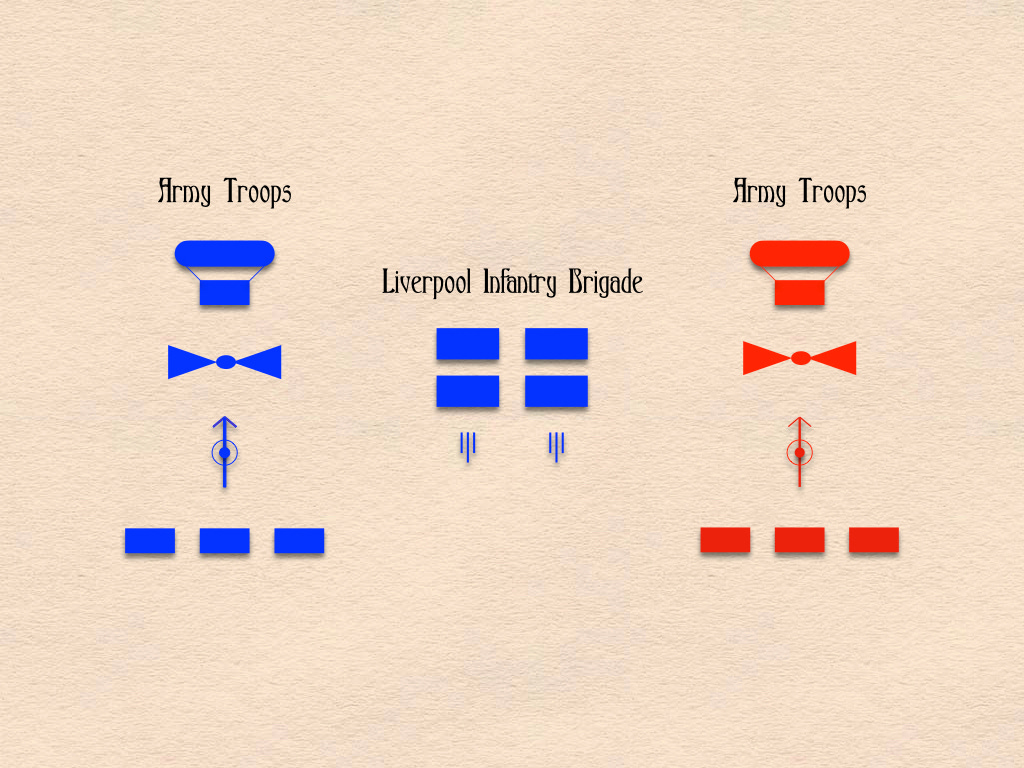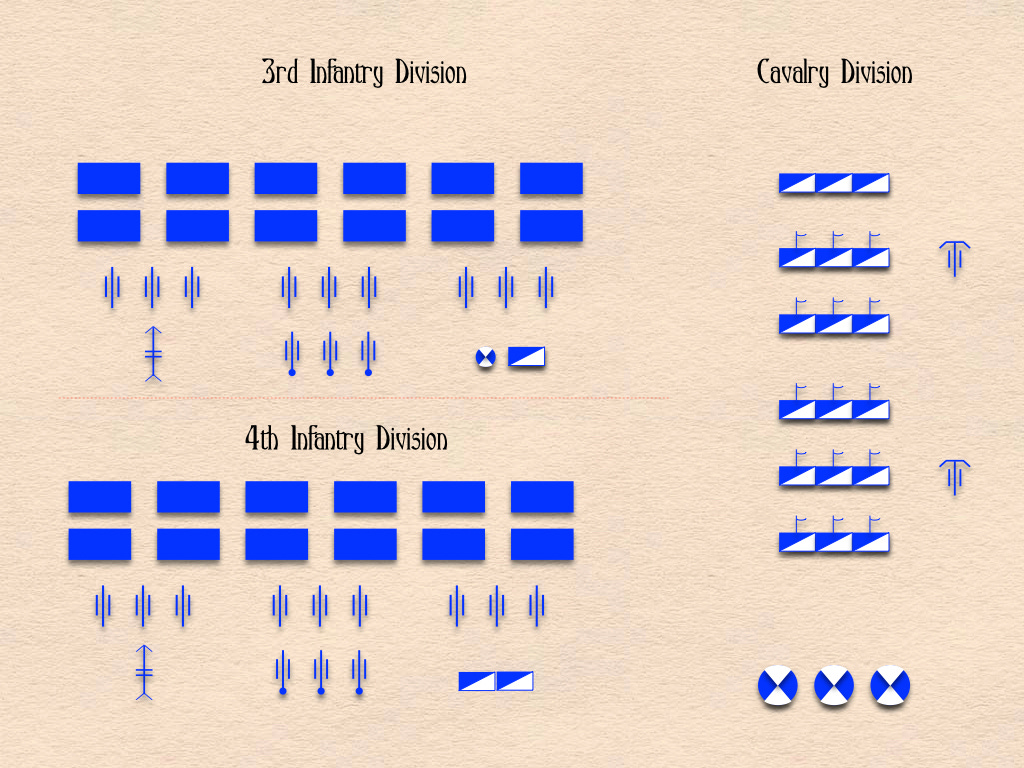The grand maneuvers conducted by the British Army in 1912 served a number of purposes. One of these was experimentation with various refinements on the reforms introduced by Secretary of State for War Sir Richard Burdon Haldane over the course of the six previous years.
Each of the two sides in the contest was organized as an “army (group of two or more divisions.)” In other words, each was formed into what contemporary European soldiers would have instantly recognized as an “army corps.”
The Blue Army, commanded by Lieutenant-General Sir James Montcrieff Grierson, consisted of two infantry divisions, a cavalry division, a brigade of Territorial Force infantry from the city of Liverpool, and army troops. The Red Army, under Lieutenant-General Sir Douglas Haig, consisted of two infantry divisions, a slightly larger cavalry division, and army troops.
The army troops of each side were nearly identical. That is, each consisted of an airship, a small number (six for Red, four for Blue) of aeroplanes, a battery of four 6-inch howitzers (configured as heavy field howitzers), and three signal companies. The infantry brigade from Liverpool was reinforced with two batteries of 15-pounder BLC field guns.1
The infantry divisions of both sides differed chiefly in the type of mounted troops with which they were provided. Where each infantry division of the Red Army was provided with two squadrons of cavalry, their counterparts of the Blue Army made do with mounted infantry and cyclists.
Similarly, while the cavalry divisions of both armies used units of cyclists and mounted infantry as substitutes for cavalry units of comparable size, the cavalry division of the Red Army benefitted from a larger proportion of proper horse soldiers. (One of the brigades of the Blue Army cavalry division was made up of three cyclist battalions. Another had two cavalry regiments and a battalion of mounted infantry.) 2
The cavalry division of the Red Army had twice as many horse artillery batteries as its Blue Army counterpart. Moreover, while the horse artillery batteries of the Blue Army were parceled out to cavalry brigades, those of the Red Army belonged to the cavalry division as a whole.
Source: Anonymous, “Die Englischen Armeemanöver 1912”, Vierteljahrshefte für Truppenführung und Heereskunde, Volume 10, Number 1 (1913), pages 150-151
The 15-pounder BLC (“breech-loading converted”) were 15-pounder (76.2mm) field guns of the type used in the Second Boer War (1899-1902) that had been fitted with on-carriage recoil mechanisms.
British cavalrymen of 1912 were trained in both mounted and dismounted combat. The men of mounted infantry and cyclist units rode to battle, but fought on foot.







